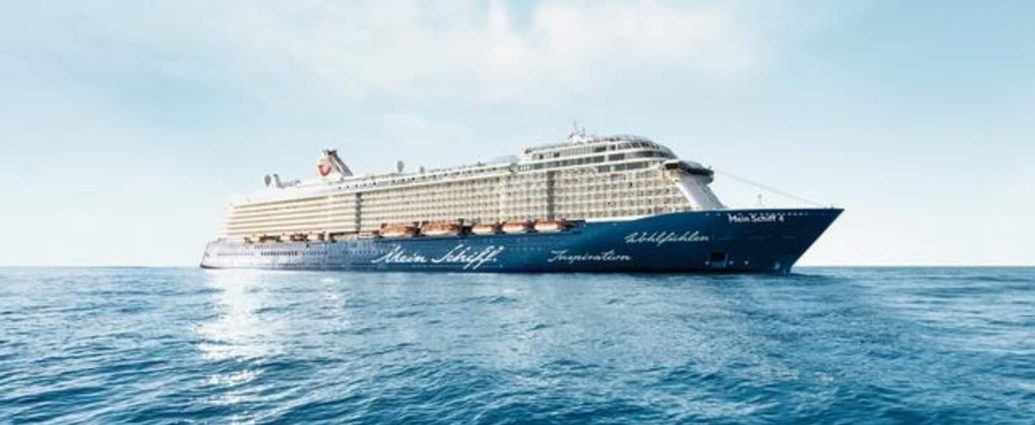When the wind drives black clouds of pollution over Mallorca’s beaches, the culprit is clear — it’s a cruise ship in the port of the island’s capital, Palma. The city on the Spanish island registered 1 million cruise ship passengers in the first nine months of 2022. Data show that 370 cruise ships came to port during the same period. This makes Palma one of the most important ports for cruise ships in the Mediterranean — which has negative consequences for the environment.
Palma ranks second in Europe, behind Barcelona, among cities where air pollution is greatest due to cruise ships, according to activists of the Mallorcan Platform Against Mega Cruise Ships. This year alone, they say, the ships in Palma have already released 38,500 tons of CO2, 890 tons of nitrogen dioxide and 635 tons of sulfur dioxide. “Shipping companies have still not taken sufficient measures to protect the environment, the climate and public health,” say the activists.
Slow to change
German environmental association NABU, which issues an annual assessment on the efforts of the world’s largest shipping companies in terms of environmental and climate protection, found in its so-called Cruise Ranking that cruise ship operators are sorely lacking.
The best-ranked company this year, the Norwegian firm Hurtigruten, met just 50% of the environmental and climate protection targets. Other companies in the ranking performed even worse. (Also Read | The complete list of long weekends in 2023)
“The results show once again that environmental and climate protections are still not at the forefront of cruise companies’ operations and new ship construction,” NABU wrote. While there are definitely exceptions and some positive developments, says Christian Kopp, NABU transport policy officer, progress “is clearly moving too slowly.”
Helge Grammerstorf, Germany director of the Cruise Lines International Association (CLIA), sees things differently. He vehemently defends the industry’s actions. “The cruise lines are not only doing a lot, they are doing everything they can,” he says.
They have made significant advancements in various technologies over recent years, making the industry a “pioneer” and “driver of innovation” for the shipping industry as a whole, he adds. “At the end of the day, however, companies can only put into their ships what is available on the market,” he says.
Climate-neutral is long-term goal
The cruise ship industry argues that a climate-neutral and ready-to-use type of emission-free drive technology simply does not yet exist. Currently, liquefied natural gas is the most promising alternative fuel, with hydrogen, electricity and e-fuels still in development.
Nevertheless, the industry is pursuing ambitious goals. By 2030, the first ships will be powered in a climate-neutral manner, Grammerstorf promises. By 2050, this will apply to entire fleets.
The fact that the majority of ships will continue to be powered by diesel fuel, which has particularly poor environmental performance, is proof of how far the industry has to go, says Grammerstorf. However, standard ship equipment already includes an exhaust gas treatment system that significantly reduces emissions, he adds.
Alexis Papathanassis, a professor of tourism and cruise management at Bremerhaven University of Applied Sciences, also points to the industry’s efforts. “Shipping companies are trying to get up to speed with the latest technology, partly with the aim of reducing energy costs,” he says.
But that is complicated by the fact that building a cruise ship (which can last around 20 years) typically requires an investment of several hundred million euros. In light of rapid technological developments, however, ships these days can become obsolete after just a few years, while retrofitting them is expensive and often includes restrictions.
Added to this is economic competition between shipping companies, experts point out. Companies that voluntarily comply with nonmandated environmental regulations face additional costs and are therefore at an economic disadvantage.
“Regulation plays a big role,” Papathanassis says. In Norway, for example, strict requirements already apply to cruise ships in some locations there, as well as in Antarctica. “This is how standards are created,” he says.
“As a result, shipping companies have to adapt more quickly.”
Could onshore power save the day?
The issue of onshore power supply shows how the pollution situation can be addressed. Up to 10% of diesel emissions on a cruise ship occur while ships are floating in ports with energy supplied via onboard diesel generators kept running. As result, large amounts of emissions are created near the shore, fouling air that particularly affects residents.
On-shore power infrastructure can change this situation by allowing ships to connect to the local electricity grid — and stop running their noisy and polluting engines. Under an EU regulation, all major ports must provide such infrastructure needed by 2030. According to CLIA Germany, about 40% of cruise ships worldwide already have onshore power connections — and over the next five years, that figure is expected to rise to 70%.
Yet the problem lies with the ports themselves. “Only 29 of the approximately 1,000 cruise ports have been equipped accordingly so far,” Grammerstorf says. “The ports also have to do something to make sure we make progress here.”
The port of the German city of Kiel will have one of the world’s largest onshore power connections. By the time the infrastructure is complete in 2023, six ships will be supplied with green power simultaneously.
Palma’s port authority has also been criticized for this. Although it is Mallorca’s most important port of call for cruise ships, it does not have infrastructure for onshore power. And according to the port authority, this will not change anytime soon.
And so, the clouds of smoke will continue to drift over Palma whenever a cruise ship is in port.
